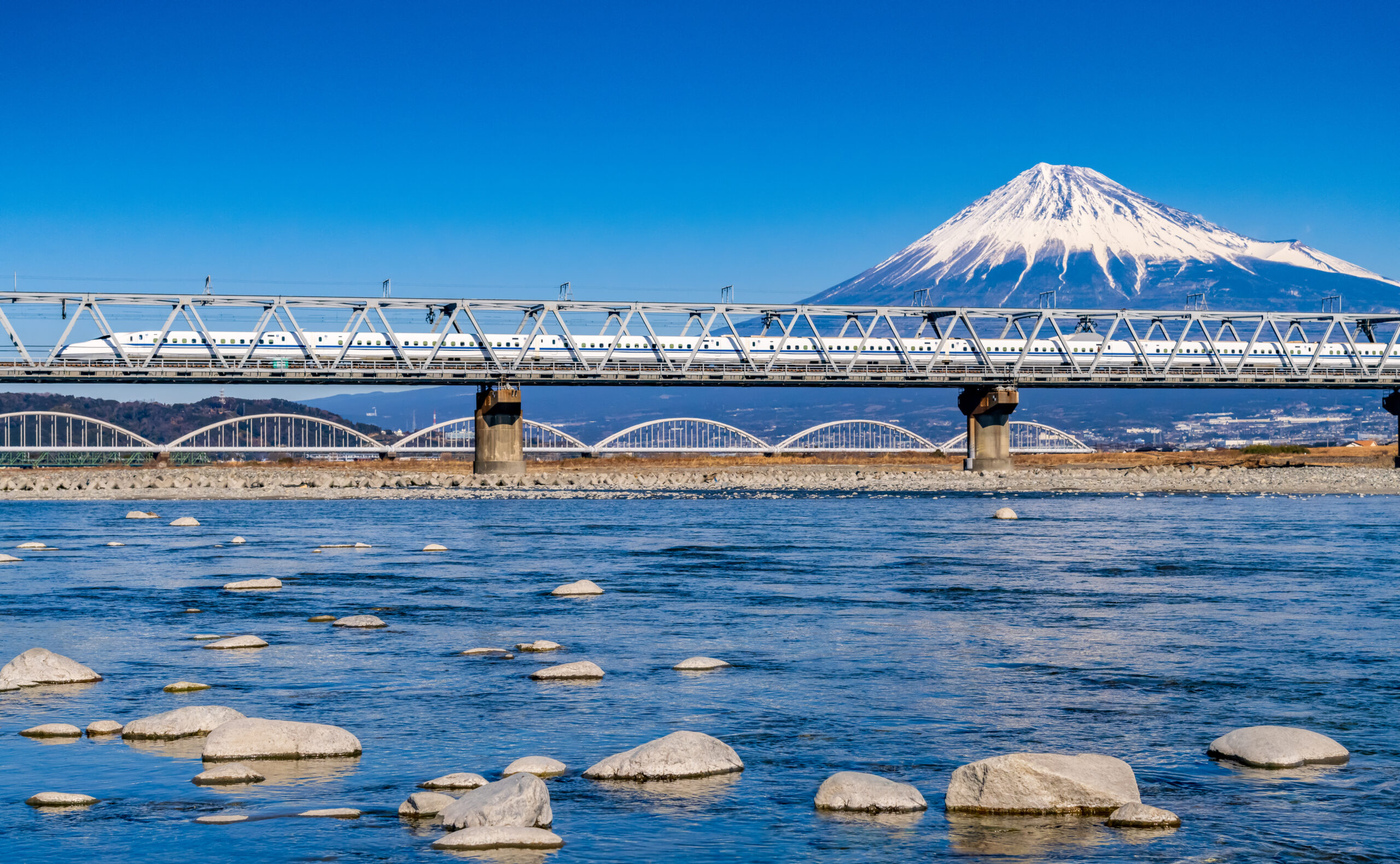The train in Japan
Japan is the “land of transportation.” Anyone who has taken or is planning a vacation in Japan can testify that Japanese public transportation is extremely efficient. Japanese trains are especially so, so much so that more and more of the famous Shinkansen (the very fast “bullet trains”) are appearing in Italian newspapers and news reports.
Especially in Japan’s large cities, trains and subways have for decades now been a viable alternative to the automobile, a solution that is often inconvenient and “not very punctual” because of sustained city traffic. It will come as no surprise to learn that Japan therefore has the most active rail network in the world. About 18 million people use the train every day, and this figure represents 40 percent of the country’s total daily travelers. To understand the significance of this number, one only has to consider that in the United States, for example, the percentage of those who travel daily by vehicle is no more than 8 percent.
Every day there are about 26,000 trains running through Japan’s national territory, and about 70 percent of these are operated by Japan Railways, the country’s main railway company. This company is credited with the birth of the super-fast trains called Shinkansen, true masterpieces of engineering and a source of pride for the entire nation.
The Shinkansen high-speed trains
The Shinkansen “bullet train” was born in 1964 and immediately entered history as the very first high-speed train ever created. This new railway line was originally conceived in preparation for the 1964 Tokyo Olympics, and its construction was a colossal undertaking. Numerous tunnels were dug into the mountains to connect Tokyo to the major cities of central Japan, and in many cases pre-existing viaducts were remodeled in order to place tracks on them.
To this day, of course, there are many more routes that can be traversed, and these very fast trains whizz daily from the north to the south of Japan. The design of the trains is very futuristic, as is their speed: during service the Shinkansen reach a top speed of 320km/h, but in operational tests they can push up to over 500km/h. No wonder, then, that in a country prone to earthquakes, typhoons and major winter snowfalls, the trains are always on time.
First and second class on trains
Travelers can choose to travel first (called green) or second class. Although the latter is almost at the level of first class in other countries around the world, Shinkansen offer an even higher level. In Japanese first class, the seats are wider, comfortable, and equipped with footrests. The windows are very large and the carriage is generally pleasantly quiet given the smaller number of passengers. The size of the windows is not a detail to be underestimated, as for the Japanese, the Shinkansen is no longer just a means of transportation, but a real travel experience.
In fact, many routes offer beautiful countryside scenery to observe, including rice paddies, tea plantations, and for the lucky ones even some striking glimpses of Japan’s most famous volcano, Mount Fuji. Some routes offer an even higher class than first class called Gran Class, synonymous with true luxury.
second class carriage, red seats in rows of 5
second class carriage, blue seats in rows of 4
Grand class carriage, leather seats in rows of 3
The rules to be observed on Japanese trains
Whether you are on a bullet train, a city train, or even in the subway, there is an etiquette to be observed in Japan. Many of these are unwritten rules, and all are aimed at a quiet and peaceful sharing of the transportation service. Let us mention some of the most common ones:
It is not considered good manners to speak in a high tone of voice and it is forbidden to talk on the phone (except in some areas of the Shinkansen).
A general rule of thumb is to try not to take up too much space, such as stretching your legs too far or taking up empty seats with bags or backpacks. If you have bulky luggage, it is best to keep it as close to you as possible.
Eating is not prohibited, however, littering or leaving trash inside the carriage is not allowed.
Respect the rule of priority seats and give up your seat. In Japanese trains (as well as buses) there are “priority” seats reserved for the elderly, pregnant women or people with disabilities. These seats should naturally be left vacant, and it is common sense to also give up one’s regular seat to those who need it more than we do.
Finally, a separate mention should be made of the cars reserved for women, a very distinctive feature of Japanese trains. Just as the name suggests, many trains have one or more carriages that at the busiest times can be used only by women. If you are a man and access these carriages you are technically not breaking any laws, however be prepared for long stares and grumbling from the ladies present!
Advertising image urging good manners on the train
Campaign raising awareness of good manners on the train
The train in everyday life in Japan
As mentioned above, the train (in all its forms) is the absolute most popular means of transportation for the Japanese. Thanks to the extensive network of train and subway lines, a large proportion of people residing in large cities are thus able to make their various daily commutes without ever having to take a car. In this way, the train becomes an integral part of the daily lives of millions of Japanese.
Thus, it is the train with its very precise service schedules that will mark the moments of a worker’s life. However, the punctuality of Japanese transportation can also be a double-edged sword. Indeed, the last train of the day will not wait for any latecomers, and if an unfortunate employee fails to catch it, he or she will be forced to fall back on an unscheduled overnight stay in a capsule hotel.



